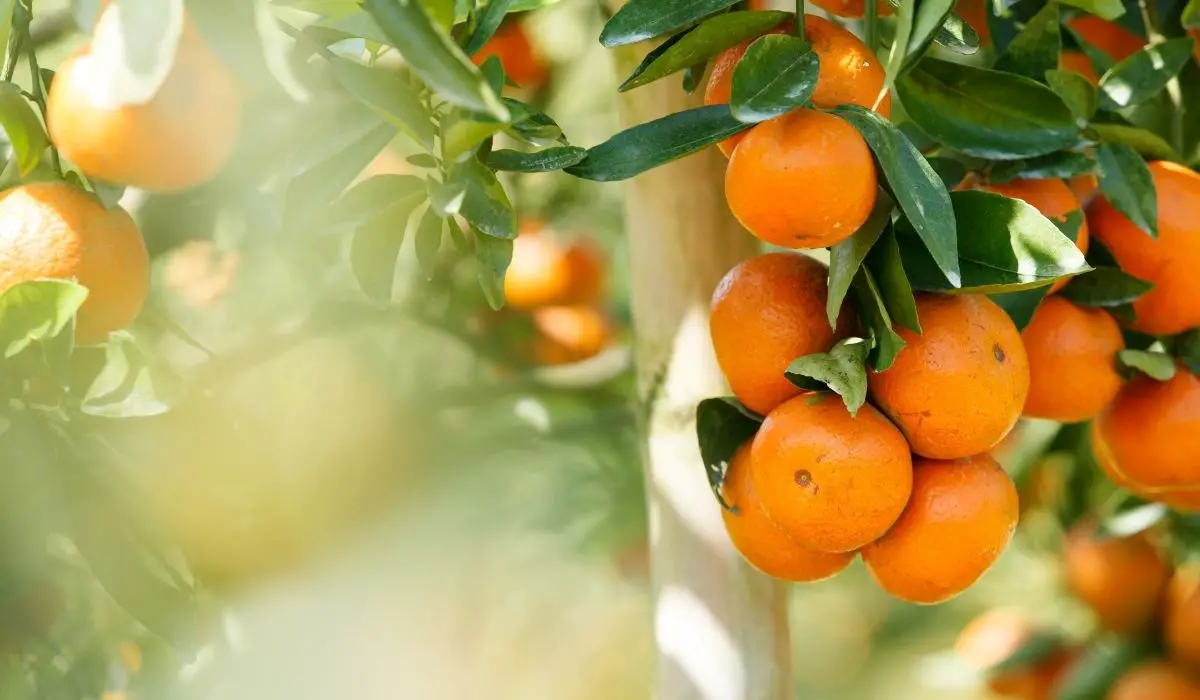Last Updated on January 15, 2023 by Urska
Do you want to know how to grow an orange tree from a seed and get to enjoy its bountiful harvest of fresh fruits for the rest of your life?
If you’re looking for a fantastic indoor gardening project, then you may want to try growing an orange tree from a seed. You can use seeds from an orange that you get from the farmers’ market to grow your tree.
It may take up to a decade to get fruits from the tree; however, it will be fun and easy. Read on for tips and tricks on how to grow an orange tree from a seed.
How To Grow An Orange Tree From A Seed
Orange trees are popularly propagated through grafting. Before you begin, you need to understand that the Orange tree grown from seed might not bear you fruits for the first 10 to 12 years. However, if you want to start an orange tree from seed, you can do it.
In rare cases, it may not be able to bear fruits for the whole of its lifetime. Also, the tree will be highly susceptible to various diseases, which is why commercial orange farmers do not choose this method of growing oranges.
Commercial growers prefer to use grafted seedlings to benefit from a healthy mature tree with a desirable, productive rate. They can harvest their fruits at least after 2 to 3 years.
How To Plant An Orange Seed – Step-By-Step Guide
The first source of organic oranges is commonly found in the farmers’ market. Ensure that you choose orange varieties that have seeds. Don’t go for the seedless varieties.
- Cut the orange in half, carefully collecting its seeds.
- Once you obtain the seeds, wash them with soap and water.
- Carefully peel the seeds to remove the top part that protects the inner part of the seed and delays germination.
- Sow your seeds during the spring when the soil is warm enough up to at least 15 degrees centigrade. You can sow many seeds from different oranges since only a fraction with which the young seedlings stage.
- Sow your seeds in a big pot or container in lines spaced at least 3 inches each row and at least an inch apart from each other.
- Lightly press the seed into the soil mix at least 0.7 to 1 inch deep and cover with a layer of soil.
- Place your containers in a dark, warm place for 10 to 12 days. Keep the soil moist but not soggy until the seeds germinate.
When your seeds germinate and your seedlings reach a height of 8 to 11 inches, you can transplant them to larger individual pots filled with soil fertilizer or a good amount of well-rotted manure. In doing this, you’re providing their siblings access to enough space to develop their route. Keep the seedlings quick access to plenty of sunlight.
Grow Orange Tree From Seed – Germination Time
Orange seed germination can take between 6 to 8 weeks or more. Meanwhile, the soil cannot dry out or become waterlogged, as too much moisture causes the seed to rot.
Once the first true leaves emerge, keep watering your seedling by misting it with water daily. To speed up germination, you can use gibberellic acid to soak your seeds. The gibberellic acid can be purchased online or in garden supply stores.
What Soil Is Best For Orange Seeds Germination
Orange seeds prefer neutral to slightly acidic soil, and it’s best germinated on soil rather than any other potting mix. Before germination, sterilize your soil by covering and heating it to 180° in a home oven for half an hour.
You can also buy the commercial bagged topsoil that has added amendments to increase drainage and moisture retention. Peat moss or vermiculite must be used in equal parts with soil to make an appropriate germinating mixture.
If you decide to use peat moss, it will be essential to place the soil in pots and water several times to ensure your peat moss is moist all the time.
Grow Orange Tree From Seed – Selecting Orange Seedlings
Once your Orange seeds have germinated, it is best to select the finest.
The orange trees have two different types of seedling sprouts – genetic and vegetative sprouts. The vegetative sprouts have the same traits as the mother tree, so they eventually produce quality fruit. Genetic sprouts carry genetic variations due to cross-pollination; they may not produce the mother’s same fruit quality. The genetic sprouts should be removed and not allowed to grow to maturity.
Each orange seed produces 3 sprouts – 1 genetic and 2 vegetative. The vegetative sprouts are vigorous and grow taller than the weaker genetic sprouts. Ensure that you snip the genetic sprouts at the base using a small pair of scissors and discard it. Allow the vegetative sprout to grow without any competition for nutrients.

Transplanting Your Orange Seedlings And Aftercare
You will need to transplant your seedlings into a new pot or your garden once they produce several sets of leaves. If you’re moving them into new pots, fill the containers with at least 4 to 6 inches of soil. Remember to use pots that have drainage holes to release as much water as possible to avoid waterlogging.
Keep the seedlings in a bright sunny spot allowing southern exposure, and water them every time the soil dries on the surface. And sure, you had plenty of water until it trickles down from the bottom of the pot.
Fertilize orange seedlings every 2 weeks with half a teaspoon of 10-10-10 fertilizer diluted in a gallon of water. During Autumn and Winter, stop fertilizing your trees. Orange trees always respond best when planted outdoors within their preferred climate range. However, you can also grow them in containers but ensure we provide them with the right atmosphere.
Conclusion
Now that you have learned how to grow an orange tree from a seed, remember to choose from two varieties.
The Valencia variety is the most common type across the world. Nearly all of the world’s orange juice comes from Valencia oranges. This fruit is large and is also commonly eaten fresh.
This fruit requires plenty of heat to mature and therefore does best in the warmest areas. In the US, its best-growing conditions are found in Florida, the Rio Grande Valley of Texas, dry regions of Arizona and California. The Valencia oranges in these areas mature in January or February and can remain on the tree for several months after ripening even to flowering. In areas where there is less warmth, ripening is delayed and overlaps with flowering for several months.
The naval variety is most loved and consumed as fresh fruit. They are not commonly preferred for juicing because the juice gets better during preservation. This fruit is more prominent in size than the valentia variety and seedless.
The most common navel orange varieties include the Bahia Washington navel or merlin. The novel variety grown in the US ripens from fall into winter, and the fruit can stay on the tree for 3 to 4 months.
Next up, learn all about Kumquat Tree.
Caroline is a gardener who loves to get down to the nitty–gritty of gardening. She proudly proclaims herself as a ‘dirt worshipper‘ and can often be found deep in the garden, covered in soil and singing to her plants. As a self–proclaimed ‘plant whisperer‘, Caroline believes that plants need love and attention just like any other living thing, and she loves to give them both. When she‘s not tending to her garden, you can often find her researching the latest gardening trends, or teaching others how to make their gardens thrive



